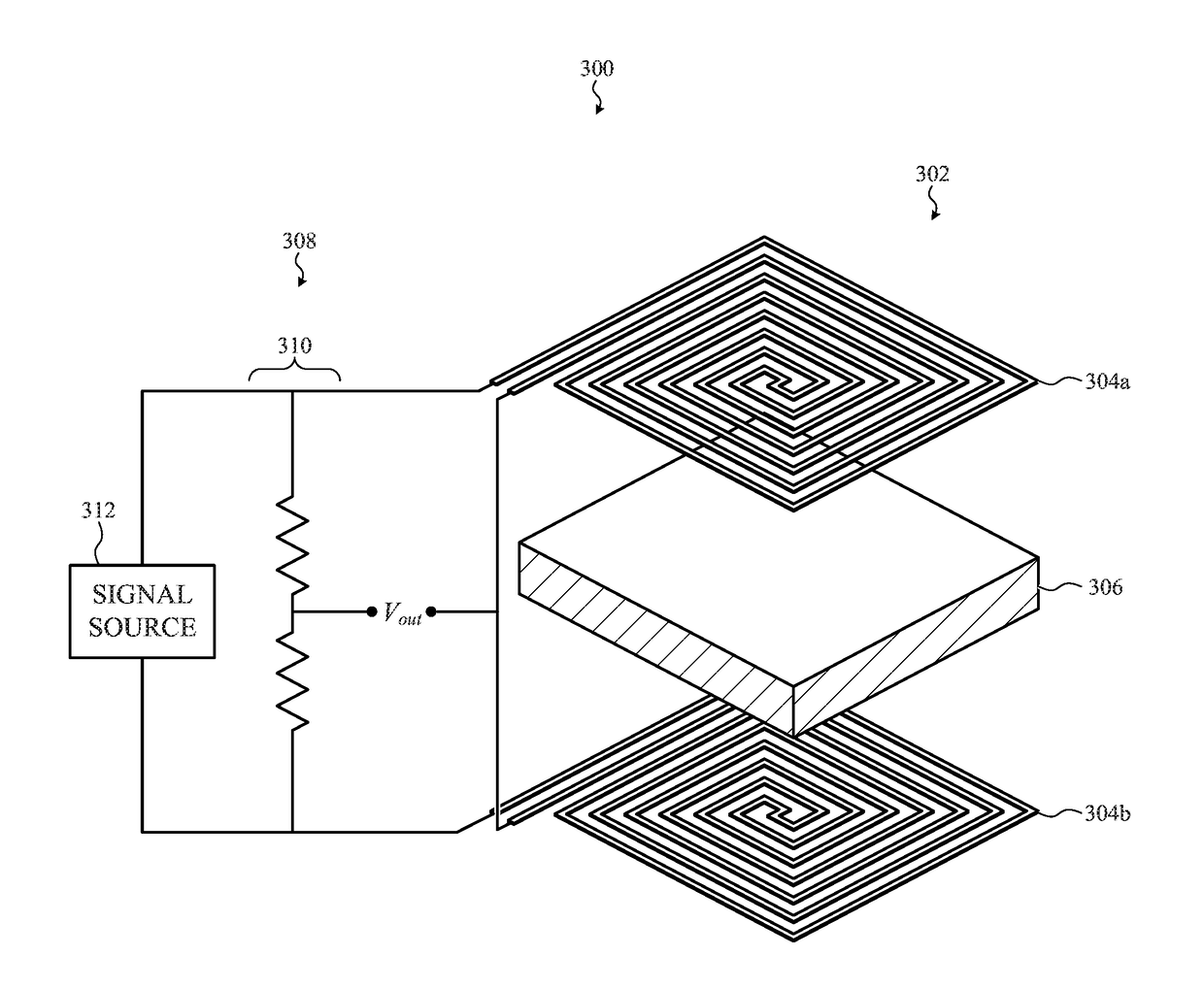Magnetic Interference Avoidance in Resistive Sensors
a resistive sensor and magnetization interference technology, applied in the direction of electric/magnetic measurement arrangements, instruments, force measurement, etc., can solve the problem that the measurement obtained from the strain-sensitive element is affected by interferen
- Summary
- Abstract
- Description
- Claims
- Application Information
AI Technical Summary
Benefits of technology
Problems solved by technology
Method used
Image
Examples
Embodiment Construction
[0023]Embodiments described herein reference an electronic device that gathers pressure or force input from a user.
[0024]The electronic device can perform an operation based on characteristics of the force input such as, but not limited to: presence or absence of the force input, a magnitude of the force input, a rate of change of the magnitude of the force input, a location of one or more focal points of the force input, a change in a location of one or more focal points of the force input, a duration of the force input, and so on. The electronic device can perform the operation at any suitable time during or after the force input is applied by the user. Example electronic devices include, but are not limited to: portable electronic devices, fixed electronic devices, cellular telephones, tablet computing devices, wearable computing devices, peripheral input devices, industrial or equipment control devices, transportation devices, navigation devices, medical devices, health devices,...
PUM
 Login to View More
Login to View More Abstract
Description
Claims
Application Information
 Login to View More
Login to View More - R&D
- Intellectual Property
- Life Sciences
- Materials
- Tech Scout
- Unparalleled Data Quality
- Higher Quality Content
- 60% Fewer Hallucinations
Browse by: Latest US Patents, China's latest patents, Technical Efficacy Thesaurus, Application Domain, Technology Topic, Popular Technical Reports.
© 2025 PatSnap. All rights reserved.Legal|Privacy policy|Modern Slavery Act Transparency Statement|Sitemap|About US| Contact US: help@patsnap.com



